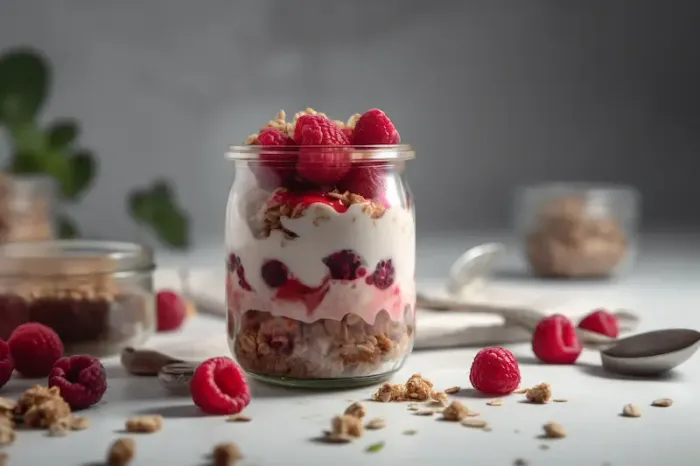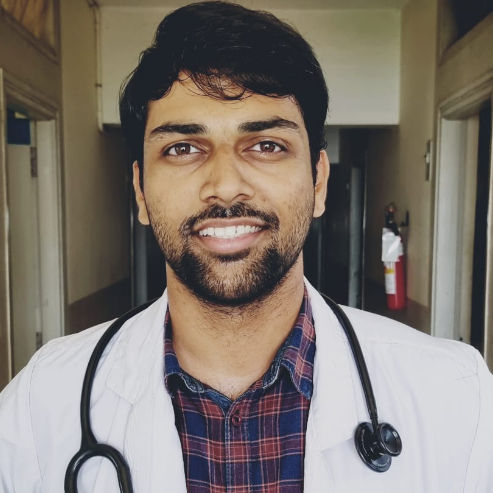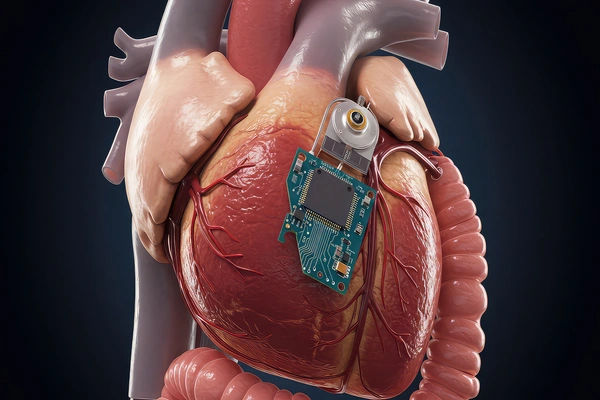What Should Be Post Fracture Trauma Diet
Discover the best post-fracture trauma diet to support bone recovery. Learn which nutrients, foods, and supplements help speed up healing and strengthen bones after a fracture.


Introduction
Breaking a bone is tough on your body—and your routine. Whether your fracture came from a fall, sports injury, or road traffic trauma, what you eat over the next few weeks can make a meaningful difference in how quickly and comfortably you recover. A well-planned diet after fracture trauma supports bone repair, reduces inflammation, preserves muscle, and helps you regain strength. In this guide, you’ll learn exactly what to include (and avoid) in your post-fracture trauma diet, how much protein and calcium you really need, when supplements are useful, and how to tailor your meals if you’re older, vegetarian, or managing conditions like diabetes. You’ll also get sample meal plans, grocery lists, and practical tips to make nourishing choices even when mobility is limited. If symptoms persist beyond two weeks or your recovery feels off track, consult a doctor online with Apollo 24|7 for further evaluation. Apollo 24|7 also offers convenient home collection for tests like vitamin D or HbA1c if needed. Let’s build a fracture recovery plan that works for your life—one smart plate at a time.
How Bones Heal After a Fracture?.
A fracture sets off a complex, energy-intensive repair process with three overlapping phases: inflammation (days 1–5), soft callus formation (weeks 1–3), and hard callus/remodelling (weeks 3–12+). Most simple fractures take about 6–8 weeks to heal; older age, smoking, diabetes, poor nutrition, and complex injuries can extend this timeline [1,2]. During healing, your body increases protein turnover to build new collagen and bone matrix, and it demands more micronutrients (calcium, vitamin D, vitamin C, magnesium, zinc) to mineralise the callus. That’s why a targeted post-trauma nutrition plan can improve comfort, maintain muscle, and support faster recovery.
Consult Top Specialists For Personalised Diet
What changes nutritionally after trauma:
• Energy needs rise (often 10–30%) depending on injury severity; under-eating can slow healing.
• Protein needs increase to supply collagen and tissue repair; inadequate protein risks muscle loss and delayed healing.
• Micronutrient needs for bone-mineralising nutrients (calcium, vitamin D, K, magnesium, zinc) become more critical.
• Inflammation is high initially; an anti-inflammatory eating pattern helps without compromising tissue repair.
Core Nutrition Targets for Fracture Recovery
Here are the nutrition you need for fracture recovery:
• Calories: Aim for your usual intake plus about 10–20% during the first weeks, adjusting for appetite and activity. If you were dieting before injury, pause calorie restriction; under-fueling can delay healing.
• Protein: Target 1.0–1.5 g per kg body weight per day (e.g., 70–105 g for a 70 kg adult) to support collagen formation and preserve lean muscle [6]. Spread protein across meals (25–35 g each) for best use. This is especially important for older adults, who have higher anabolic needs.
Practical examples:
• 1 cup Greek yogurt + 2 tbsp nuts + fruit (20–25 g protein)
• 2 eggs + 1 cup cooked lentils (30+ g protein)
• 100 g paneer/tofu/chicken/fish with whole grains and vegetables (25–35 g protein)
Calcium and Vitamin D: Mineralise the Callus
• Calcium: Most adults need 1,000–1,200 mg/day from food and/or supplements; aim for food first (dairy, fortified plant milks, tofu set with calcium, leafy greens, sesame/tahini, canned fish with bones).
• Vitamin D: Supports calcium absorption and bone remodeling. Many adults are low; consider testing. Typical maintenance is 600–800 IU/day; if deficient, your clinician may recommend 1,000–2,000 IU/day or a short course of higher-dose vitamin D to correct levels. Apollo24|7 offers vitamin D home testing to guide dosing.
Vitamin C and Collagen: Scaffolding for New Bone
Vitamin C is essential for collagen synthesis—the framework upon which minerals deposit. Aim for 75–120 mg/day from citrus, berries, kiwifruit, tomatoes, bell peppers, amla (Indian gooseberry), or an optional 250–500 mg supplement if intake is low. Collagen or gelatin might support connective tissue synthesis; combining 10–15 g gelatin with vitamin C an hour before rehab sessions is a practical strategy some athletes use. Evidence is suggestive but not definitive; food-first vitamin C remains fundamental.
The “Supporting Cast”: K, Magnesium, Zinc, Copper, Manganese, Phosphorus
• Vitamin K (leafy greens, broccoli, herbs) supports bone matrix proteins; be consistent if you’re on warfarin—speak to your doctor first.
• Magnesium (nuts, seeds, legumes, whole grains) participates in vitamin D metabolism and bone mineralisation.
• Zinc (meat, eggs, legumes, seeds), copper (nuts, shellfish, legumes), and manganese (whole grains, nuts) are trace minerals important for bone enzymes.
• Phosphorus is widely available in protein-rich foods; balance is key, especially in kidney disease.
Build Your Plate: The 80/20 Fracture Recovery Plate
When pain or fatigue make eating hard, a simple plate model helps you hit targets without counting every gram:
• Half the plate: Colourful vegetables and fruits for vitamin C, K, magnesium, antioxidants (e.g., bell peppers, broccoli, tomatoes, berries, amla).
• One-quarter: Protein anchor (25–35 g per meal). Examples: eggs; fish; chicken; paneer/tofu; dal/lentils/chickpeas; Greek yoghurt; tempeh; soy milk with calcium.
• One-quarter: Whole grains or starchy veg for energy (brown rice, roti, quinoa, oats, sweet potatoes).
• Add healthy fats: Nuts, seeds, avocado, olive/mustard oil; include omega 3s (fatty fish, walnuts, flax/chia).
Vegetarian fracture recovery foods:
• Dal + quinoa + stir-fried spinach + paneer/tofu
• Khichdi with extra moong dal + curd + salad
• Oats cooked in calcium-fortified soy milk + chia + berries
• Chickpea chaat with veggies + sesame-tahini dressing
Non-vegetarian examples:
• Grilled fish + sweet potato + sautéed greens
• Chicken curry + brown rice + cucumber raita
• Egg bhurji + multigrain roti + mixed salad
Seven Day Sample Meal Plan for Post Fracture Healing
This plan targets roughly 90–110 g protein/day and includes calcium/vitamin D–rich options. Adjust portions for your calorie needs, preferences, and cultural foods.
Day 1
• Breakfast: Oats cooked in calcium-fortified milk, topped with chia and berries (anti-inflammatory diet after injury).
• Lunch: Moong dal + brown rice + stir-fried spinach with sesame.
• Snack: Greek yoghurt with banana and walnuts.
• Dinner: Grilled fish or tofu, sweet potato, and broccoli.
Day 2
• Breakfast: Besan chilla stuffed with paneer; tomato-cucumber salad.
• Lunch: Chickpea salad with bell peppers, lemon, olive oil; whole-grain roti.
• Snack: Milk or soy milk + roasted chana.
• Dinner: Chicken curry or kidney beans (rajma) + quinoa; carrot-beet salad.
Day 3
• Breakfast: Eggs (or tofu scramble) + multigrain toast + avocado.
• Lunch: Lentil soup with added milk powder, mixed greens, and seeds.
• Snack: Cottage cheese (paneer) + pineapple.
• Dinner: Salmon (or tempeh) + barley + green beans.
Day 4
• Breakfast: Poha with peanuts and peas + amla juice.
• Lunch: Tofu/paneer tikka wrap in whole wheat roti + yoghurt raita.
• Snack: Fruit + handful of almonds.
• Dinner: Mutton stew (or mixed bean stew) + brown rice; sautéed kale.
Day 5
• Breakfast: Smoothie: fortified soy milk, banana, oats, peanut butter, flax.
• Lunch: Dal makhani + millet roti + salad.
• Snack: Buttermilk or kefir + trail mix.
• Dinner: Baked chicken thighs (or chickpea curry) + sweet potato + broccoli.
Day 6
• Breakfast: Idli with sambar; add extra dal to sambar for protein.
• Lunch: Tuna (or chickpea) sandwich on whole-grain bread + leafy greens.
• Snack: Hard-boiled eggs or edamame.
• Dinner: Paneer bhurji (or egg bhurji) + quinoa + sautéed mushrooms.
Day 7
• Breakfast: Upma with vegetables + yoghurt.
• Lunch: Lentil-quinoa bowl with roasted vegetables and tahini.
• Snack: Protein shake (whey/soy) with cocoa + banana.
• Dinner: Grilled shrimp (or tofu) + brown rice + spinach salad.
Hydration goal: 8–10 cups fluids/day; include water, lemon water, buttermilk, herbal tea. If constipation from pain meds, increase fluids and fibre; add prunes or psyllium.
Smart Supplement Strategy: What Helps, What’s Hype
Know what supplements actually help here:
Evidence-backed basics
• Vitamin D: If low, correcting deficiency supports bone healing; test before high dosing. Apollo 24|7 can arrange home collection for vitamin D.
• Calcium: Use food first; supplement to reach 1,000–1,200 mg/day total. Split doses (≤500 mg at a time) for better absorption.
• Protein: If appetite is poor, consider whey or soy protein to meet 1.0–1.5 g/kg/day. This is one of the most effective “supplements” you can use.
• Vitamin C: Reasonable to add 250–500 mg/day if intake is low; essential for collagen.
Potentially helpful but mixed evidence
• Collagen/gelatin: May support connective tissue; benefit is plausible but not definitive.
• HMB (beta hydroxy beta methylbutyrate): In older or immobilised adults, HMB can help preserve lean mass; discuss with your clinician.
• Omega 3 fatty acids: Support overall cardiometabolic health and may modulate inflammation; no clear fracture-healing endpoint benefit. Food sources are preferred.
Use with caution or avoid
• Mega doses of single minerals (e.g., high-dose zinc) can disrupt balance (e.g., copper deficiency). Stay within recommended limits.
• Excess vitamin A (retinol) has been linked with reduced bone density; avoid high-dose retinol supplements.
• Herbal blends with unknown interactions—review with your doctor, especially if on anticoagulants.
Anti Inflammatory Eating Without Undercutting Healing
Inflammation helps initiate repair, but chronic, excessive inflammation can slow recovery. An anti-inflammatory pattern emphasises:
• Omega 3s: Fatty fish 2–3 times/week, walnuts, chia/flax.
• Colourful plants: Aim for 5–9 servings/day for polyphenols and vitamin C (berries, tomatoes, leafy greens, turmeric/ginger).
• Whole grains and legumes: Fibre supports gut health, which influences systemic inflammation.
• Spices: Turmeric (with black pepper), ginger, garlic—easy adds to daily cooking.
Limit:
• Excess alcohol (can impair bone formation)
• Sugary drinks/ultra-processed snacks
• Trans fats and repeated high-heat oilsConsult Top Specialists For Personalised Diet
Special Situations: Tailoring Your Diet
Tailor your diet according to the age and health condition of the person:
• Older adults (65+)
Aim for the higher end of protein (1.2–1.5 g/kg/day), prioritise vitamin D sufficiency, and consider oral nutrition supplements if appetite is low. In hip-fracture patients, protein-energy supplements reduced complications in some studies.
• Diabetes and fracture healing diet
Keep carbs consistent, distribute protein at each meal, and choose high-fibre carbs (legumes, whole grains). Good glycemic control supports healing and reduces infection risk. Apollo 24|7 offers home HbA1c testing if you need to reassess control.
• Obesity or weight loss goals
Pause aggressive dieting. Focus on protein-forward, high-volume veggies, and moderate whole grains. You can revisit weight loss after consolidation of the fracture.
• Vegetarian/vegan
Anchor protein with soy (tofu/tempeh/soy milk), legumes, seitan, and fortified foods. Ensure calcium (fortified plant milks, tofu set with calcium, sesame/tahini) and B12 if vegan.
• Chronic kidney disease (CKD)
Discuss protein, potassium, and phosphorus targets with your nephrologist; avoid indiscriminate calcium or vitamin D dosing.
• Osteoporosis or fragility fracture
Long-term, ensure adequate calcium/vitamin D, protein, weight-bearing exercise (when cleared), and discuss osteoporosis therapies with your doctor.
Medications, Smoking, and Alcohol: Non Diet Factors That Interact With Healing
• NSAIDs: Some evidence suggests prolonged or high-dose NSAID use may increase risk of delayed union or nonunion; short courses at the lowest effective dose may be reasonable—discuss with your surgeon [AAFP evidence summary].
• Steroids: Can impair bone formation; nutrition becomes even more important if you require them.
• Smoking (including vaping nicotine): Reduces blood flow and oxygen delivery, associated with impaired healing. Quitting, even short term, helps.
• Alcohol: Excess intake inhibits osteoblast function and increases fall risk; limit to no more than 1 drink/day, or avoid during early healing.
Hydration, Fibre, and Gut Health
Pain meds and reduced mobility commonly cause constipation. Optimise:
• Hydration: 8–10 cups/day; include water, buttermilk, herbal teas, soups.
• Fibre: 25–35 g/day from legumes, whole grains, fruits, vegetables, flax/chia.
• Probiotics/fermented foods: Yoghurt, kefir, idli/dosa batter, sauerkraut; especially helpful if you’re on antibiotics after open fractures.
• Electrolytes: If sweating with rehab or in hot climates, include lightly salted soups or oral rehydration fluids.
Unique insight: A daily “rehab smoothie” can hit multiple goals: fortified milk/soy milk + whey/soy protein + fruit (vitamin C) + chia/flax (omega 3) + spinach (vitamin K/magnesium).
Warning Signs of Poor Nutrition or Complicated Healing
Here are some warning signs you need to keep in mind:
• Unintended weight loss, muscle loss, or persistent fatigue
• Poor appetite beyond 7–10 days
• Worsening pain, swelling, or redness; fever
• Constipation not relieved with diet/fluids
• No signs of healing on follow-up or persistent severe pain
If your condition does not improve after trying these methods, book a physical visit to a doctor with Apollo 24|7. Your clinician may order tests like vitamin D, calcium, albumin/prealbumin, or check blood sugar control; Apollo 24|7 offers convenient home collection.
Myth vs Fact: Common Misconceptions About Fracture Diets
• Myth: “Milk alone is enough.” Fact: You need protein, vitamin D, vitamin C, vitamin K, magnesium, and zinc—not just calcium.
• Myth: “High protein leaches calcium.” Fact: Within normal ranges, higher protein improves calcium absorption and supports bone and muscle [2].
• Myth: “Avoid all fats.” Fact: Healthy fats aid nutrient absorption and help meet higher energy needs.
• Myth: “Supplements can replace meals.” Fact: Supplements fill gaps; meals provide synergistic nutrients and energy.Consult Top Specialists For Personalised Diet
Conclusion
Your body is remarkably capable of repairing a fracture—but it needs the right building blocks. A focused post-fracture trauma diet supplies the protein to rebuild tissue, the calcium and vitamin D to mineralise bone, and the antioxidant-rich plants that keep inflammation in check. Begin with simple, high-impact steps: hit your protein target at each meal, include 1–2 calcium-rich foods daily, and keep your plate colourful. Build in easy wins like yoghurt, dal, eggs, tofu, and fortified milks, and lean on batch cooking and ready-to-eat snacks when pain or mobility make cooking hard. If healing seems slow, appetite remains low, or you have conditions like diabetes or kidney disease, personalised guidance matters—if symptoms persist beyond two weeks, consult a doctor online with Apollo24|7 for further evaluation. They can also arrange convenient home collection for vitamin D or HbA1c tests to fine-tune your plan. With a thoughtful nutrition strategy and steady rehab, you can support faster healing and return to your life with strength and confidence.
Consult Top Specialists For Personalised Diet

Ms. Sreeparna Dey Dhara Deb
Dietician
10 Years • DNHE
Bansdroni
Siddhita Healthcare., Bansdroni

Ms. Soma Saha
clinical nutrition
17 Years • B.Sc. - Home Science (Food & Nutrition), M.Sc. - Home Science (Food & Nutrition)
Kolkata
Dr Utsa Basu Clinic, Kolkata
(50+ Patients)

Neelanjana J
clinical nutrition
3 Years • Bsc., Msc. Nutrition and Dietetics.
Bengaluru
Apollo Clinic, JP nagar, Bengaluru

Dr Venkata Naga Sai Tribhushan Rambhatla
General Physician
3 Years • MBBS
Bengaluru
PRESTIGE SHANTHINIKETAN - SOCIETY CLINIC, Bengaluru

Ms. Sushma Jaiswal
Dietician
42 Years • M.Sc.(Food & Nutrition)
Bengaluru
Swasthya Nutrition, Bengaluru
Consult Top Specialists For Personalised Diet

Ms. Sreeparna Dey Dhara Deb
Dietician
10 Years • DNHE
Bansdroni
Siddhita Healthcare., Bansdroni

Ms. Soma Saha
clinical nutrition
17 Years • B.Sc. - Home Science (Food & Nutrition), M.Sc. - Home Science (Food & Nutrition)
Kolkata
Dr Utsa Basu Clinic, Kolkata
(50+ Patients)

Neelanjana J
clinical nutrition
3 Years • Bsc., Msc. Nutrition and Dietetics.
Bengaluru
Apollo Clinic, JP nagar, Bengaluru

Dr Venkata Naga Sai Tribhushan Rambhatla
General Physician
3 Years • MBBS
Bengaluru
PRESTIGE SHANTHINIKETAN - SOCIETY CLINIC, Bengaluru

Ms. Sushma Jaiswal
Dietician
42 Years • M.Sc.(Food & Nutrition)
Bengaluru
Swasthya Nutrition, Bengaluru
Consult Top Specialists For Personalised Diet

Ms. Sreeparna Dey Dhara Deb
Dietician
10 Years • DNHE
Bansdroni
Siddhita Healthcare., Bansdroni

Ms. Soma Saha
clinical nutrition
17 Years • B.Sc. - Home Science (Food & Nutrition), M.Sc. - Home Science (Food & Nutrition)
Kolkata
Dr Utsa Basu Clinic, Kolkata
(50+ Patients)

Neelanjana J
clinical nutrition
3 Years • Bsc., Msc. Nutrition and Dietetics.
Bengaluru
Apollo Clinic, JP nagar, Bengaluru

Dr Venkata Naga Sai Tribhushan Rambhatla
General Physician
3 Years • MBBS
Bengaluru
PRESTIGE SHANTHINIKETAN - SOCIETY CLINIC, Bengaluru

Ms. Sushma Jaiswal
Dietician
42 Years • M.Sc.(Food & Nutrition)
Bengaluru
Swasthya Nutrition, Bengaluru
More articles from General Medical Consultation
Frequently Asked Questions
1) What are the best foods for fracture healing?
Protein-rich foods (eggs, dairy/fortified soy, fish/chicken, dal/beans, tofu), calcium sources (dairy, fortified plant milks, tofu with calcium, sesame, canned fish with bones), and vitamin C–rich produce (citrus, berries, bell peppers, amla) are top picks for a best diet after bone fracture.
2) How much protein do I need after a broken bone?
Most adults should aim for 1.0–1.5 g/kg/day (e.g., 70–105 g for a 70 kg person), spread across meals. This supports collagen and preserves muscle during immobilisation.
3) Do I need a calcium or vitamin D supplement?
Try to meet calcium (1,000–1,200 mg/day) with food; add a supplement if your intake falls short. Vitamin D needs vary; testing 25(OH)D is ideal. Apollo24|7 offers home vitamin D testing to guide dosing.
4) Are there foods to avoid after a fracture?
Limit excess alcohol and ultra-processed, sugary foods. If you have kidney disease or are on warfarin, certain high-vitamin K or high-phosphorus foods may need adjustment—speak with your doctor.
5) Do collagen or omega 3 supplements speed healing?
Evidence is mixed. Collagen/gelatin may help connective tissues, and omega 3s support general health. Prioritise protein, calcium, and vitamin D first; consider these as “nice-to-have” add-ons.




